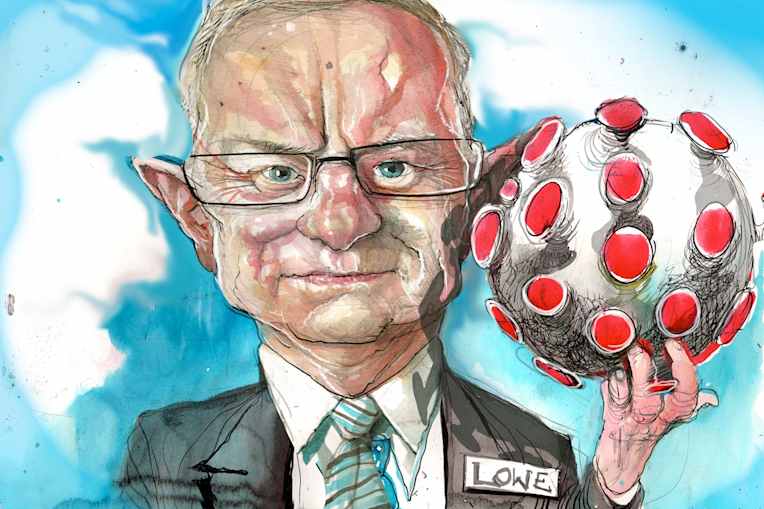RBA and markets are out of tune
by John KehoeInvestors are not picking up what the Reserve Bank of Australia is putting down.
A super-sized $120 billion easing in monetary policy this month, through an expanded term funding facility for super-cheap 0.25 per cent, three-year loans to commercial banks, generated barely a reaction in financial markets.

Perhaps frustrating officials at Martin Place, investors don't really understand why the RBA expanded the TFF and don't view it as a meaningful loosening of monetary policy.
More communication in coming RBA board meeting minutes and speeches will be required.
The Australian dollar remains stubbornly high during a recession, with currency traders largely unpersuaded by the bank's easing actions. The Aussie has jumped from US55¢ when the virus struck in March to recently hover in the low US70¢ range.
To be sure, there are reasons why the currency is relatively strong in this huge recession. The iron ore price is high, the US dollar has weakened against most currencies as the Federal Reserve conducts aggressive asset purchases, Australia's economy has been hit less by the virus and New Zealand's central bank is flirting with negative interest rates.
Moreover, perhaps if the RBA had instead allocated $120 billion to government bond purchases through quantitative easing, the reaction from traders would have been more evident.
The financial easing effect of TFF and QE should be very similar, at least according to economic theory that central bankers are closely attuned to.
TFF is giving cheap money to banks to lend or buy assets such as government bonds, and QE is buying government bonds to reduce borrowing costs.
But financial market participants were underwhelmed, judging the upsizing of the TFF to $200 billion as relatively minor.
Direct approach
Now the RBA is considering a more direct form of loosening monetary policy – buying extra federal and state government bonds further along the yield curve beyond the three-year, 0.25 per cent commonwealth yield target that has cost it $61 billion so far.
This could be complemented by trimming the 0.25 per cent overnight cash rate target to, say, 0.10 per cent – a relatively token gesture.
The RBA would have two likely objectives – putting downward pressure on the elevated currency and reducing long-term federal and state government borrowing costs to encourage fiscal stimulus spending on job-creating infrastructure projects.
The RBA could retain the existing three-year yield target at 0.25 per cent while buying more longer-dated bonds to pull down the yield curve.
Doing so would be a change of RBA objective from yield curve control to stabilise the government bond market during the pandemic, to a more explicit effort – officially or implied – of lowering long-term borrowing costs for governments.
QE, through buying billions of dollars of bonds between five and 10 years, would not do much to lower private sector borrowing costs. Mortgages and corporate loans are not really priced off the 10-year government borrowing rate.
Governor Philip Lowe is urging states to spend an extra $40 billion combined in stimulus to aid the recovery from COVID-19.
State borrowing costs, particularly at the longer end of the curve around 10 years where states tend to do most of their borrowing, are elevated compared to the Commonwealth.
Curiously, commercial banks can borrow cheaper for three years at 0.25 per cent from the TFF than higher credit-rated states can borrow in financial markets.
That's despite about one-quarter of the RBA's $61 billion in bond purchases being state government debt.
The TFF incentivises banks to buy shorter-dated state government bonds and earn a yield above the 0.25 per cent cost.
But banks are reluctant to move much beyond three years along the semi-government yield curve because it exposes them to interest rate risk.
Separately, The Australian Financial Review reported last week that over the medium term banks will be directed by financial regulators to buy up to $240 billion of additional federal and state government debt to normalise emergency bank liquidity.
If states are going to become an extra transmission mechanism for fiscal and monetary policy during COVID-19, the RBA may consider it desirable to lower their longer-term borrowing costs, with an added benefit being a lower currency.